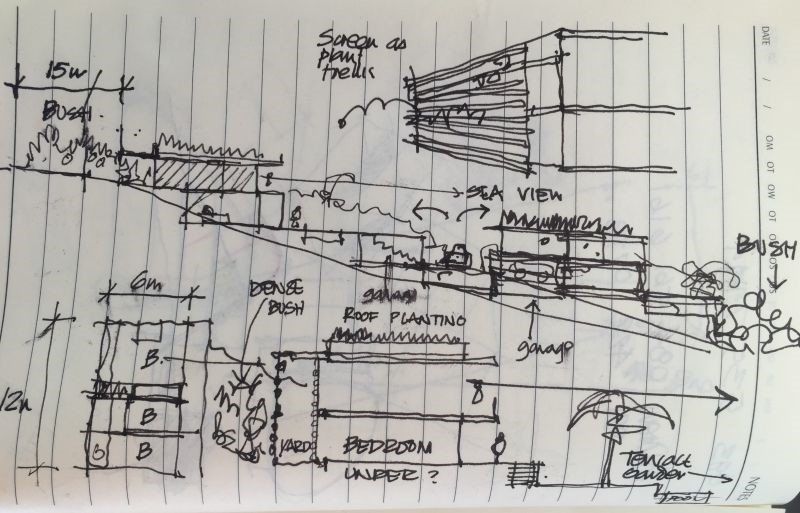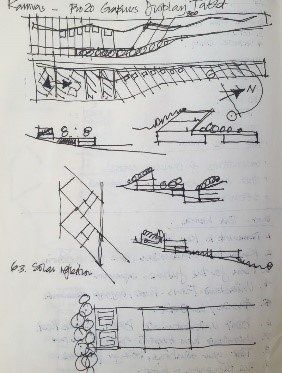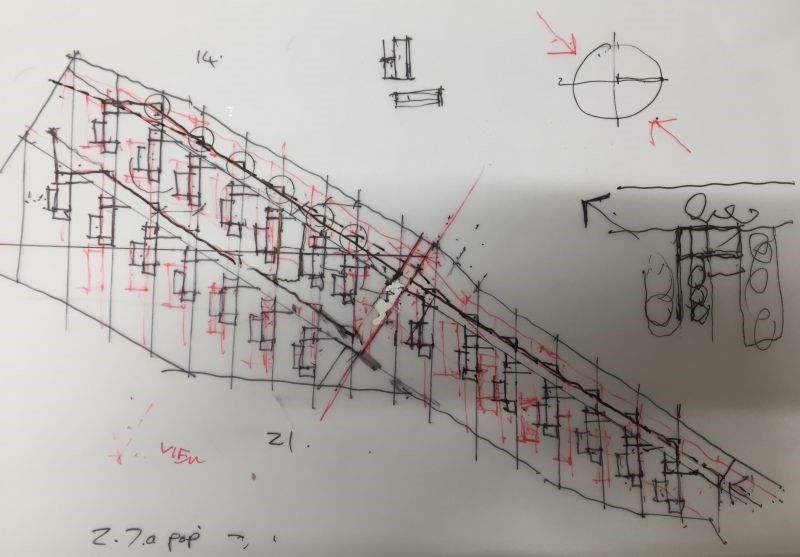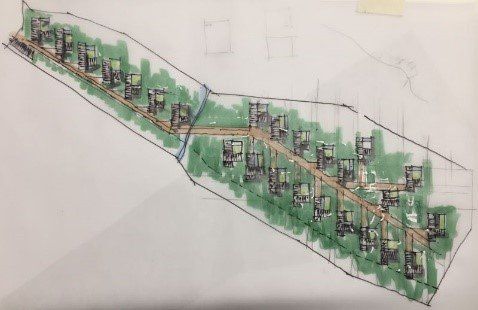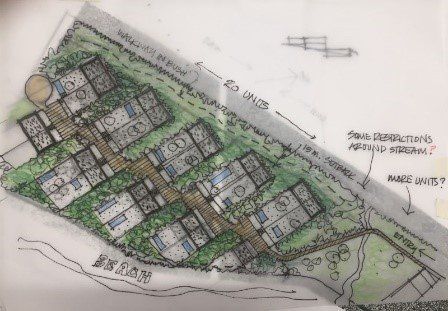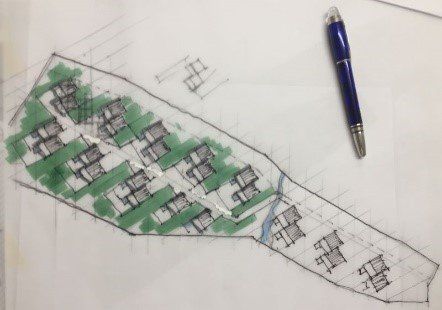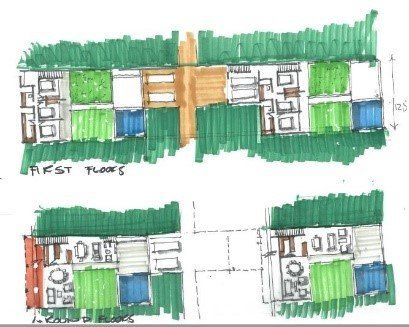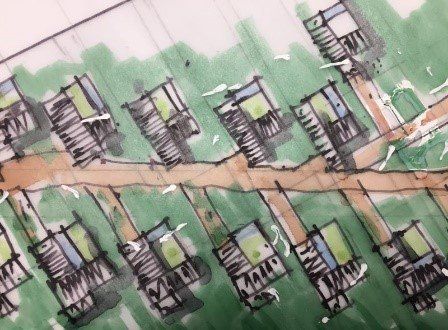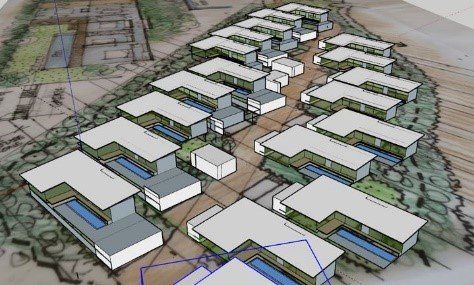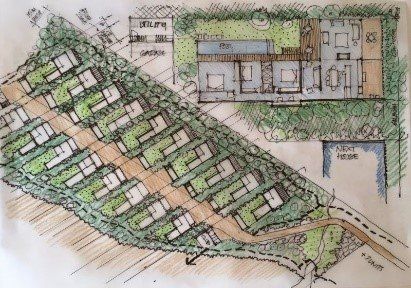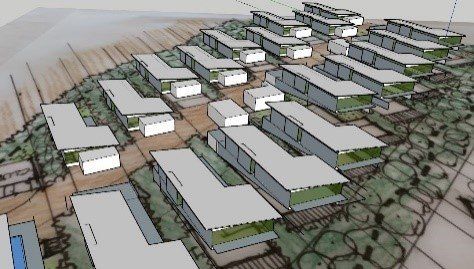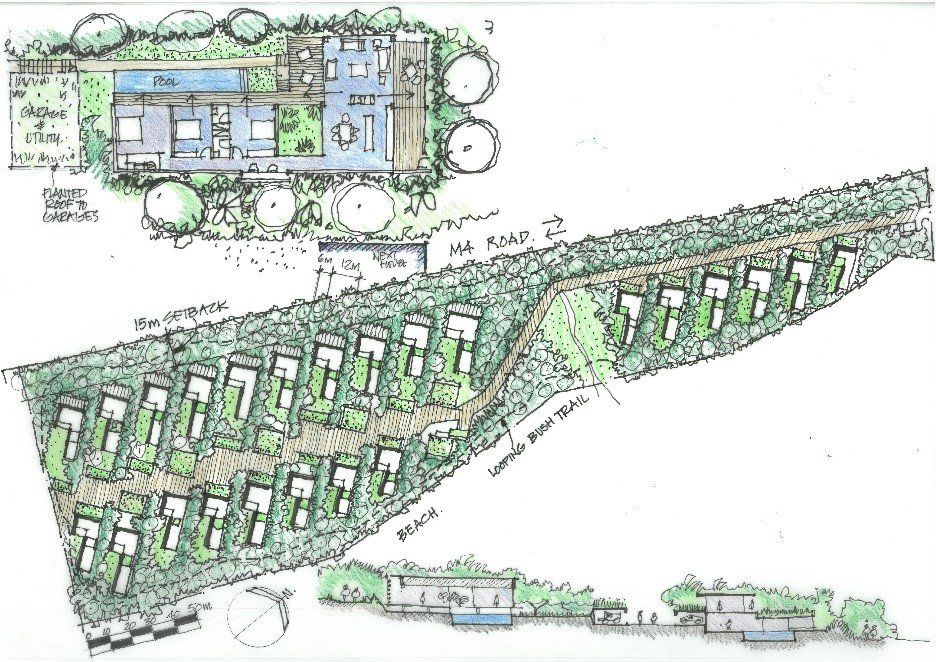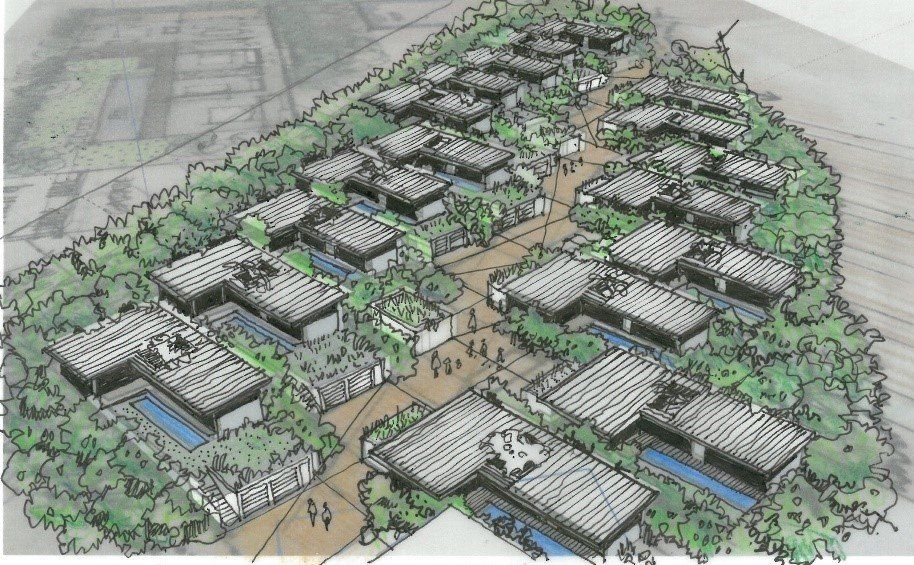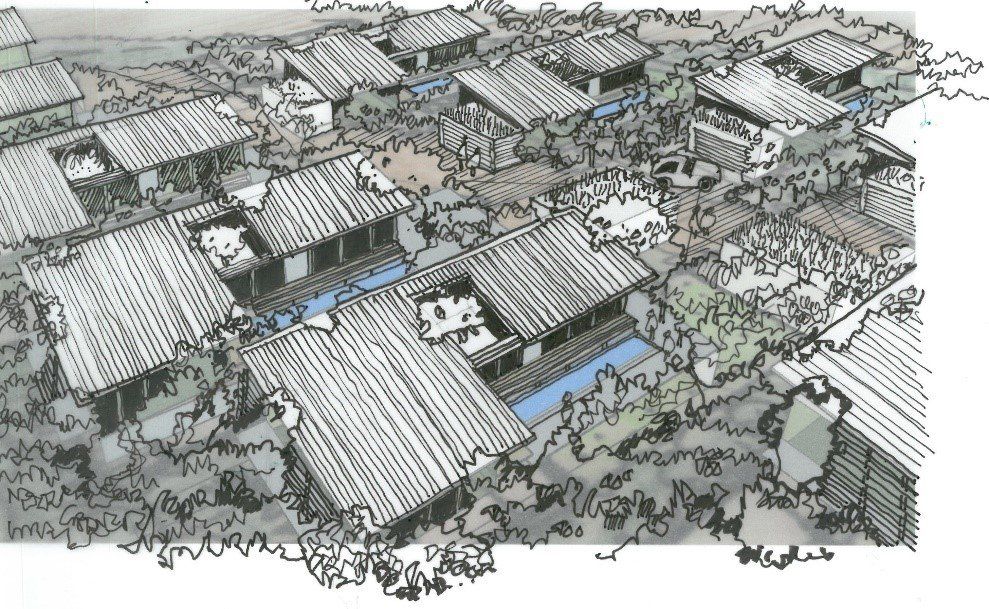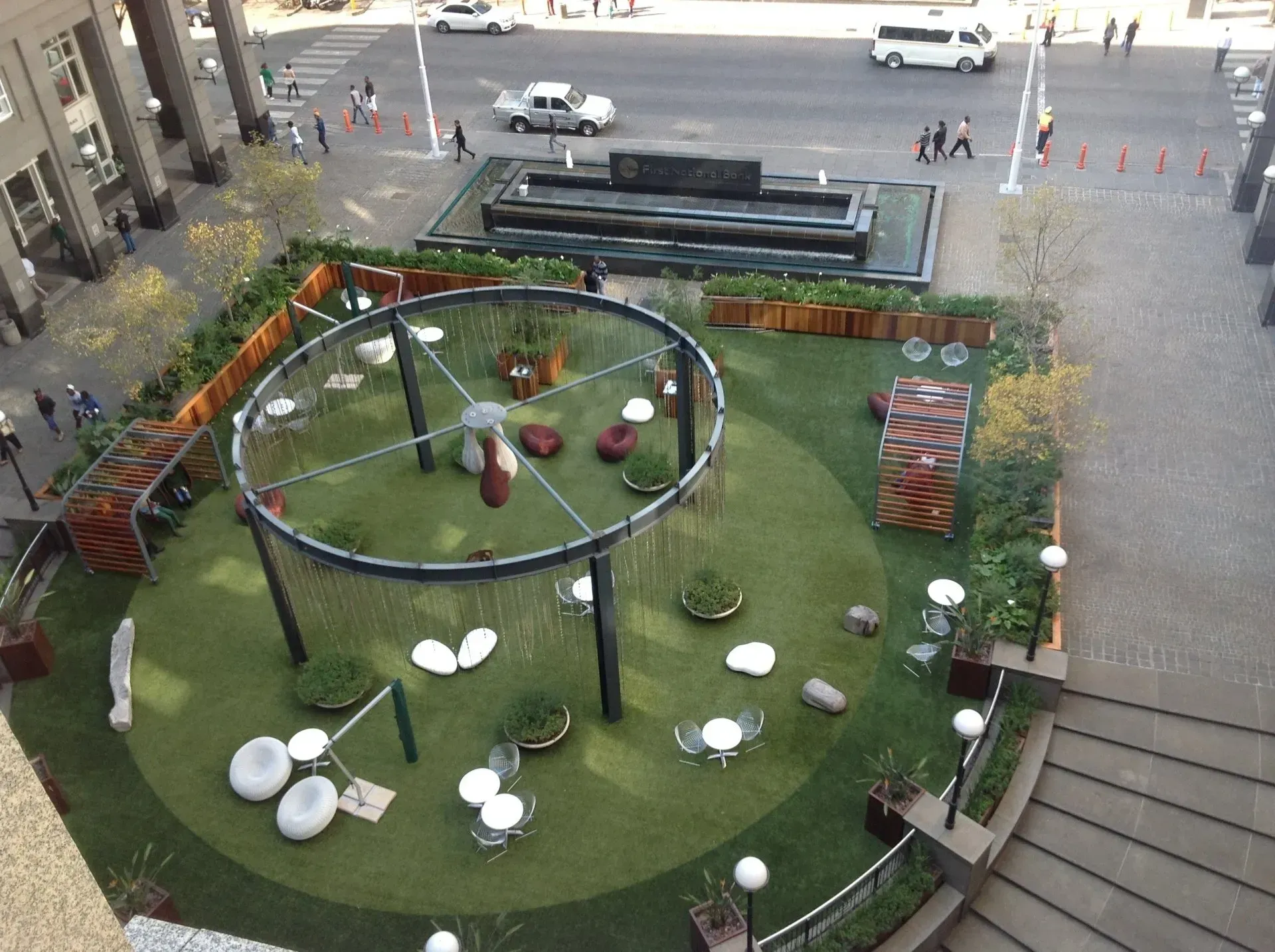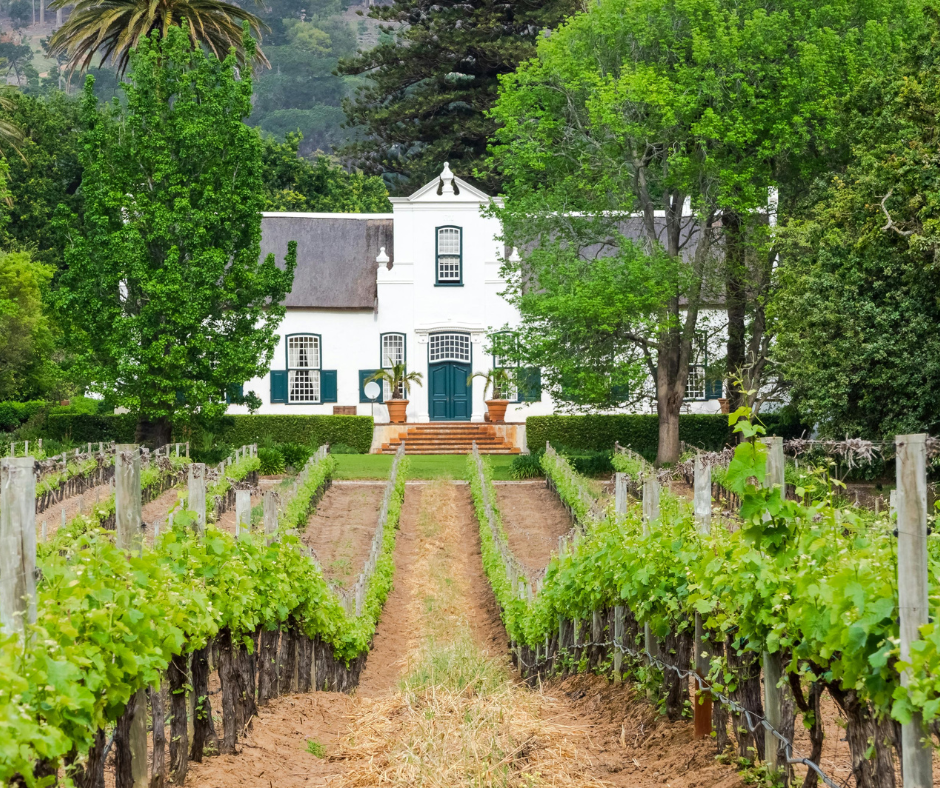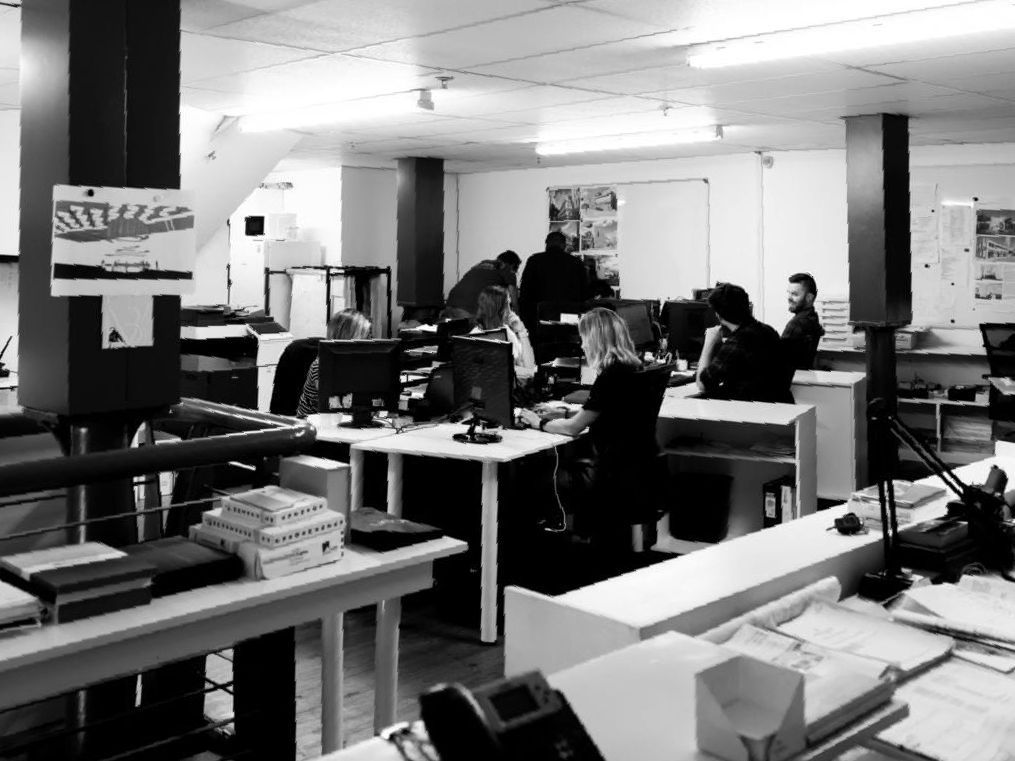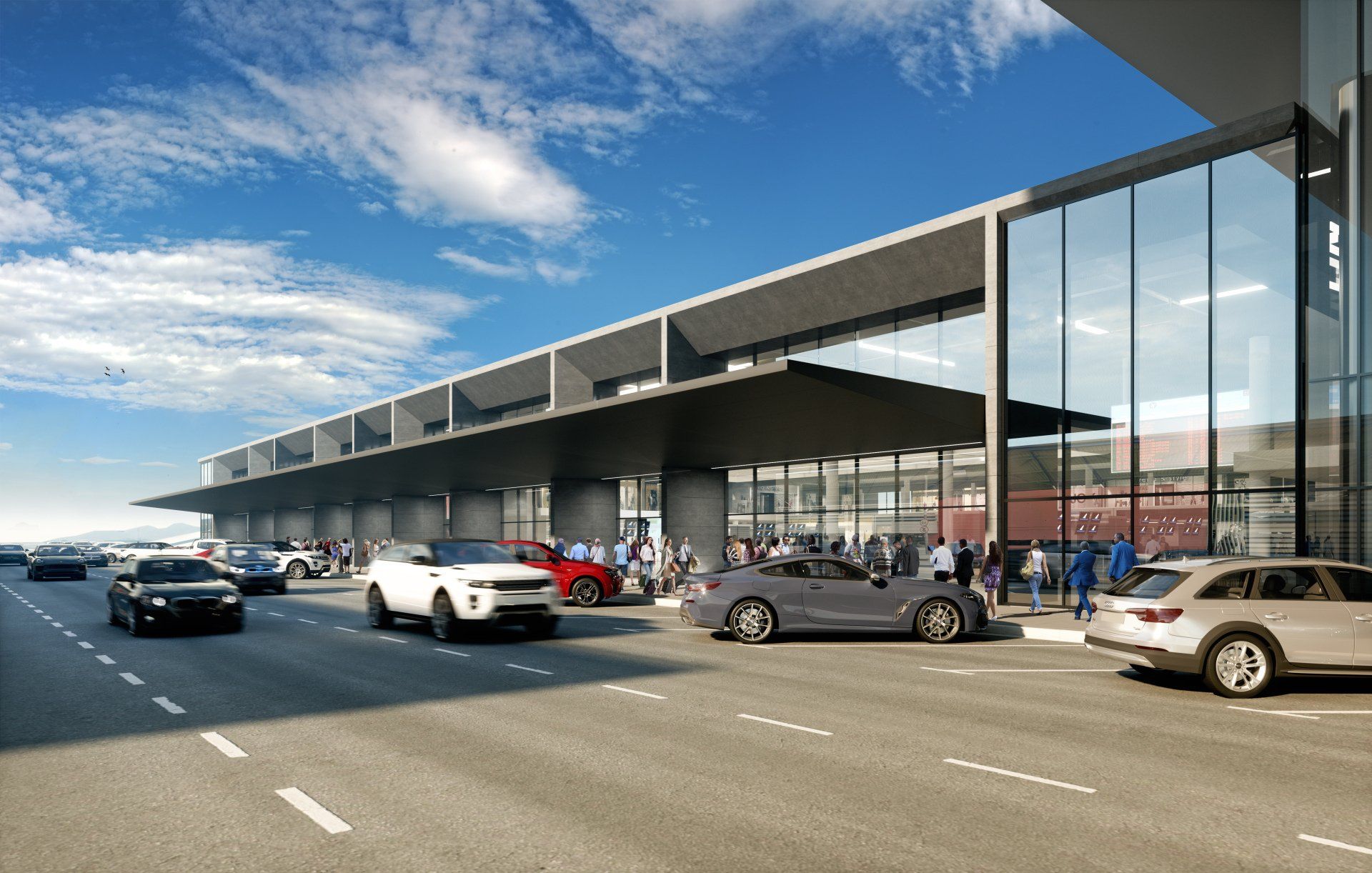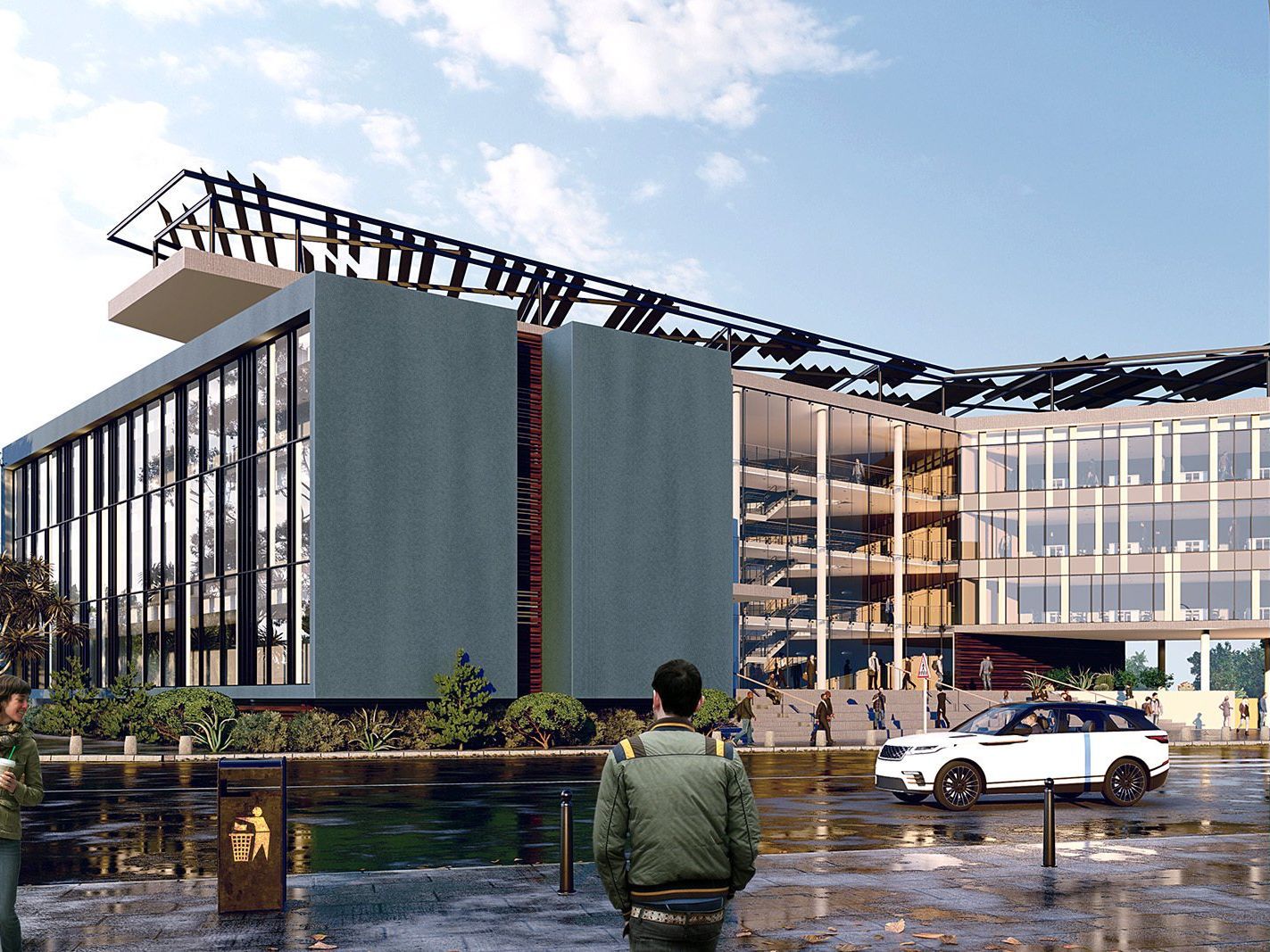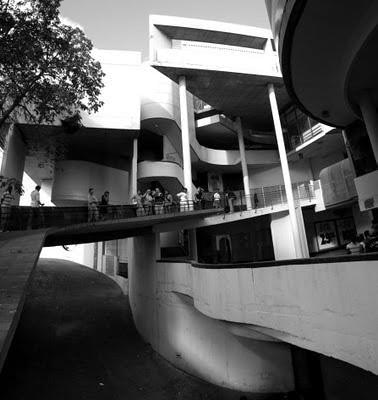The Design Process
This week we took one of our potential projects, and posted daily on LinkedIn some of the processes that we take, as architects, to come up with a design.
The project is for a proposed estate in a coastal bush site, adjacent the beach, so a very special and sensitive space. Thus, we had to tread lightly, as, on a site like this, any proposal would stir up resistance.
Our goal was to develop an initial response which could then be taken to various authorities, conservation or otherwise, to gauge reaction. Too often one can go far down a road to find there are immovable instructions which should have been foreseen.
The basic starting point, having established orientation, wind direction, and a sense of contour was to begin getting something down on paper. Because initial ideas are often the strongest, one needs to record them.
Two architects worked independently and intermittently on this. Different styles, and different approaches.
As Design progresses, certain aspects jump out as being more important than others. Slowly, they get filtered.
On our site, the North East wind can make life miserable, so our units have their backs to the wind. Likewise, sun can be extreme, so shading is required.
The site can take a bulk of 1.1, but we felt this was too much, and should be closer to 0.3, so as to preserve the bush. Thus, we took a decision that all units should have natural bush on three sides, with the fourth side being for access. And we should look at vegetated roofs
Driveways should be restricted so that the scheme does not have a mass of roads.
After a couple of days of trying different things, slowly the ideas were coming together. The idea of unattached units being surrounded by vegetation is key. Access for vehicles is minimal. And we are looking at single storey v. double storey.
Once some hand sketched ideas were in place, we could start to generate some basic forms on SketchUp. And start to make sure the layout is not too stiff.
It’s really interesting seeing different approaches to the design.
By the end of Thursday, we had some sort of cohesive scheme which can be tested with the authorities to see whether the Eco and Environmental approach will hit barriers. Again, it is important not to go too far without testing the waters ahead for crocodiles!
This is what the design could look like, albeit this is just a start.
Due to environmental concerns, our coverage is about half the allowable, and in terms of bulk, we are down to about 25% of what this site can technically take.
To be honest, we think that these sensitive sites should perhaps remain undeveloped, often being the last remaining slivers of the sea’s interface with the land.
Irrespective of the outcome, it has been an interesting exercise for us at Design Scape, being able to quickly take a project through an initial design investigation, and to inform you of the process.
At Design Scape Architects, we make it our mission to stay on top of the latest architectural and interior design trends, and provide our readers with relevant architectural information.
For more information about our innovative architectural services and on how we can assist you, get in touch with our team of professional architects and designers in Durban and Cape Town.

Cape Town
109 Waterkant Street
De Waterkant Cape Town
South Africa, 8001
Durban
Rydall Vale Office Park
Rydall Vale Crescent
Block 3 Suite 3
Umhlanga, 4019
Website design by Archmark


